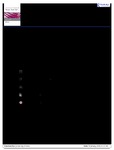Carryover of scanning behaviour affects upright face recognition differently to inverted face recognition
| dc.contributor.author | Hills, Peter | |
| dc.contributor.author | Mileva, Mila | |
| dc.contributor.author | Thompson, C | |
| dc.contributor.author | Pake, JM | |
| dc.date.accessioned | 2020-04-03T09:54:48Z | |
| dc.date.available | 2020-04-03T09:54:48Z | |
| dc.date.issued | 2016-11-25 | |
| dc.identifier.issn | 1350-6285 | |
| dc.identifier.issn | 1464-0716 | |
| dc.identifier.uri | http://hdl.handle.net/10026.1/15494 | |
| dc.description.abstract |
Face perception is characterized by a distinct scanpath. While eye movements are considered functional, there has not been direct evidence that disrupting this scanpath affects face recognition performance. The present experiment investigated the influence of an irrelevant letter-search task (with letter strings arranged horizontally, vertically, or randomly) on the subsequent scanning strategies in processing upright and inverted famous faces. Participants’ response time to identify the face and the direction of their eye movements were recorded. The orientation of the letter search influenced saccadic direction when viewing the face images, such that a direct carryover-effect was observed. Following a vertically oriented letter-search task, the recognition of famous faces was slower and less accurate for upright faces, and faster for inverted faces. These results extend the carryover findings of Thompson and Crundall into a novel domain. Crucially they also indicate that upright and inverted faces are better processed by different eye movements, highlighting the importance of scanpaths in face recognition. | |
| dc.format.extent | 459-472 | |
| dc.language | en | |
| dc.language.iso | en | |
| dc.publisher | Informa UK Limited | |
| dc.subject | Eye movements | |
| dc.subject | carryover | |
| dc.subject | face perception | |
| dc.subject | face inversion effect | |
| dc.subject | scanpaths | |
| dc.title | Carryover of scanning behaviour affects upright face recognition differently to inverted face recognition | |
| dc.type | journal-article | |
| dc.type | Journal Article | |
| plymouth.author-url | https://www.webofscience.com/api/gateway?GWVersion=2&SrcApp=PARTNER_APP&SrcAuth=LinksAMR&KeyUT=WOS:000404271800003&DestLinkType=FullRecord&DestApp=ALL_WOS&UsrCustomerID=11bb513d99f797142bcfeffcc58ea008 | |
| plymouth.issue | 9-10 | |
| plymouth.volume | 24 | |
| plymouth.publication-status | Published | |
| plymouth.journal | Visual Cognition | |
| dc.identifier.doi | 10.1080/13506285.2017.1314399 | |
| plymouth.organisational-group | /Plymouth | |
| plymouth.organisational-group | /Plymouth/Faculty of Health | |
| plymouth.organisational-group | /Plymouth/Faculty of Health/School of Psychology | |
| plymouth.organisational-group | /Plymouth/REF 2021 Researchers by UoA | |
| plymouth.organisational-group | /Plymouth/REF 2021 Researchers by UoA/UoA04 Psychology, Psychiatry and Neuroscience | |
| plymouth.organisational-group | /Plymouth/REF 2021 Researchers by UoA/UoA04 Psychology, Psychiatry and Neuroscience/UoA04 Psychology, Psychiatry and Neuroscience MANUAL | |
| plymouth.organisational-group | /Plymouth/Users by role | |
| plymouth.organisational-group | /Plymouth/Users by role/Academics | |
| dc.identifier.eissn | 1464-0716 | |
| dc.rights.embargoperiod | Not known | |
| rioxxterms.versionofrecord | 10.1080/13506285.2017.1314399 | |
| rioxxterms.licenseref.uri | http://www.rioxx.net/licenses/all-rights-reserved | |
| rioxxterms.type | Journal Article/Review |


